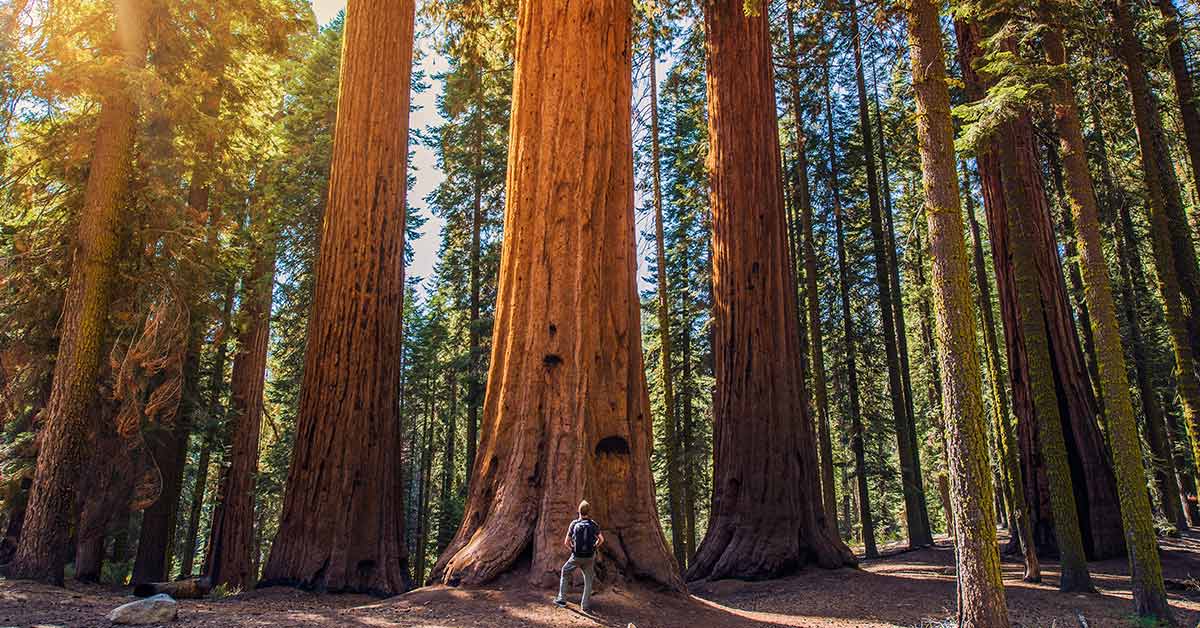Forests are a vitally important part of our environment. They stabilize the climate by removing excess carbon from the atmosphere, protect biodiversity by providing a home for countless animal and insect species, and support livelihoods [1]. Now one man is taking it to a new level by cloning redwoods in the hopes of restoring millions of hectares of coastal redwood forest.
One 2019 study found that the Earth’s ecosystems could support an additional 0.9 billion hectares of continuous forest, which has the potential to store 25 percent of the current atmospheric carbon pool, or 205 gigatonnes of carbon [2].
One area of significant opportunity is in California’s coastal redwood forests. A vast majority of these majestic trees have been lost over the last century, but one man is cloning redwoods to save them- and possibly save us, too.
Cloning Redwoods To Restore Them
The coast redwood, also known as the Sequoia sempervirens, is the tallest tree in the world. These trees can reach heights of over three hundred feet, have trunks that are more than 27 feet wide, and can live for over two thousand years.
In the early nineteenth century there were about two million acres of redwood forest along the coast of California, stretching from Big Sur all the way to southern Oregon. The gold rush of the mid-1800s and the subsequent increase in logging, however, destroyed 95 percent of the forest.
Today you can find evidence of these vast forests in the form of stumps that are 30 to 35 feet in diameter. Experts believe that these trees were about four hundred feet tall and as much as four thousand years old .
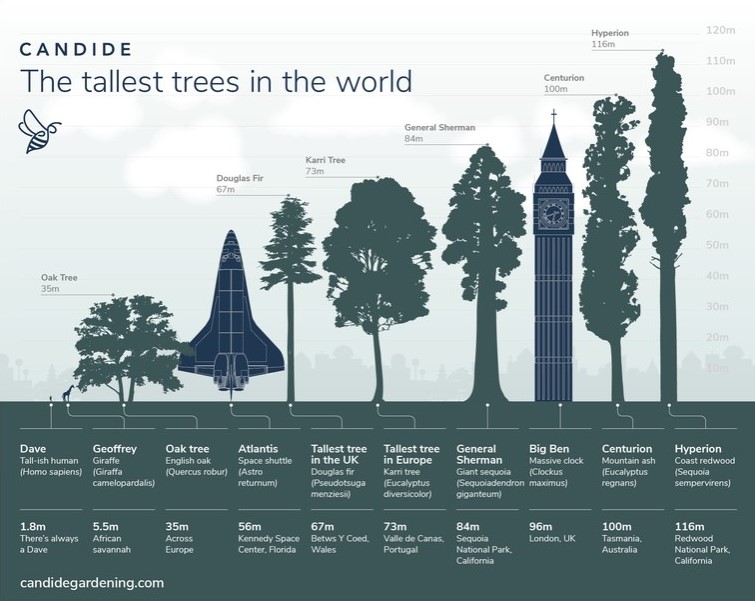
Image Credit: Candide Gardening
As climate change continues to exert its effects on the California coast and global temperatures continue to rise, the future of these massive trees is in jeopardy. Animals and people can move north to areas where the climate is more agreeable, but trees are stuck firmly where they are.
This is where a man named David Milarch comes in.
The Archangel Ancient Tree Archive
David is an arborist from Michigan who, after a near-death experience, decided to dedicate his life to saving the California redwood. After almost dying from renal failure, he decided his new mission was cloning redwoods to help them “migrate”.
“I feel tremendous sorrow that 95 percent of them were killed and we didn’t even know what they do to anchor our ability as human beings to live on this planet,” says Milarch.
He says the bad news is that we killed them, but that it’s his job to put back every single tree that was killed- and he’s going to do it.
To accomplish this extraordinary feat, he co-founded the non profit organization The Archangel Ancient Tree Archive. The organization is using genetic information from stumps and living trees to clone them and replant them in a safer place where they can thrive.
In order to do this, Milarch and his team first had to find old growth redwoods, which is harder than you might think.
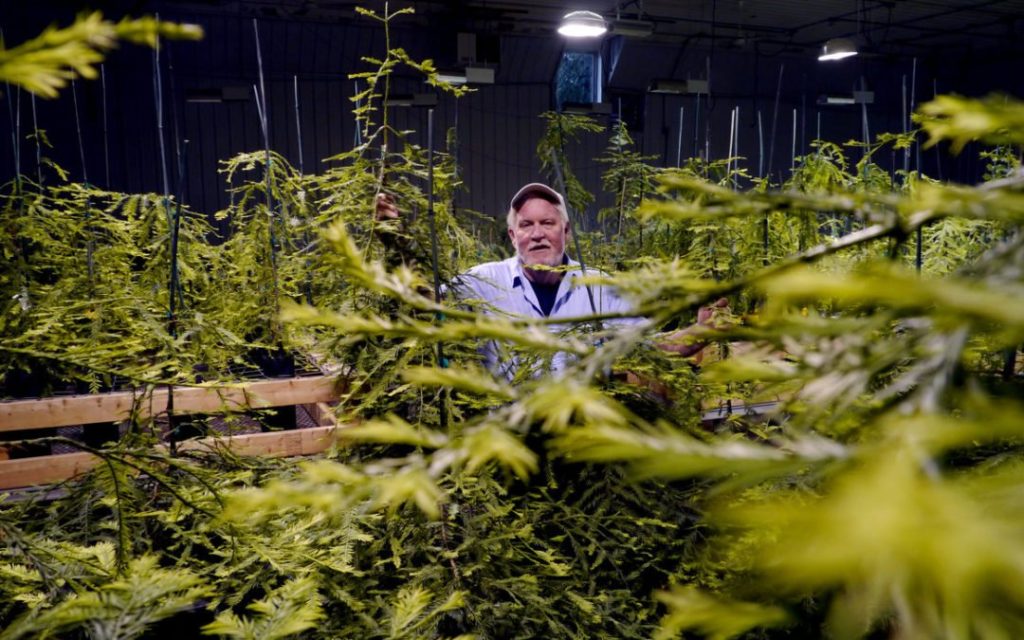
Image Cred: ARCHANGEL ANCIENT TREE ARCHIVE
“To try and find old growth redwoods, it isn’t like people would picture in their minds — these giant forests of redwoods on the West Coast. We really had to do some searching high and low,” he said [4].
Essentially, they’re creating what Milarch calls an “archival living library” of the most massive stumps, which allows them to study the genetics of these incredible trees. They want to know how that tree got to be so much larger than an average coastal redwood, and what it’s immune system was like.
Milarch is looking for the trees that have been able to survive for a millennium or more so that he can clone the most genetically robust specimens. He explains that redwoods know when they’re about to die, so they self-clone by producing little sprouts often referred to as “fairy rings”, in order for the tree to continue living.
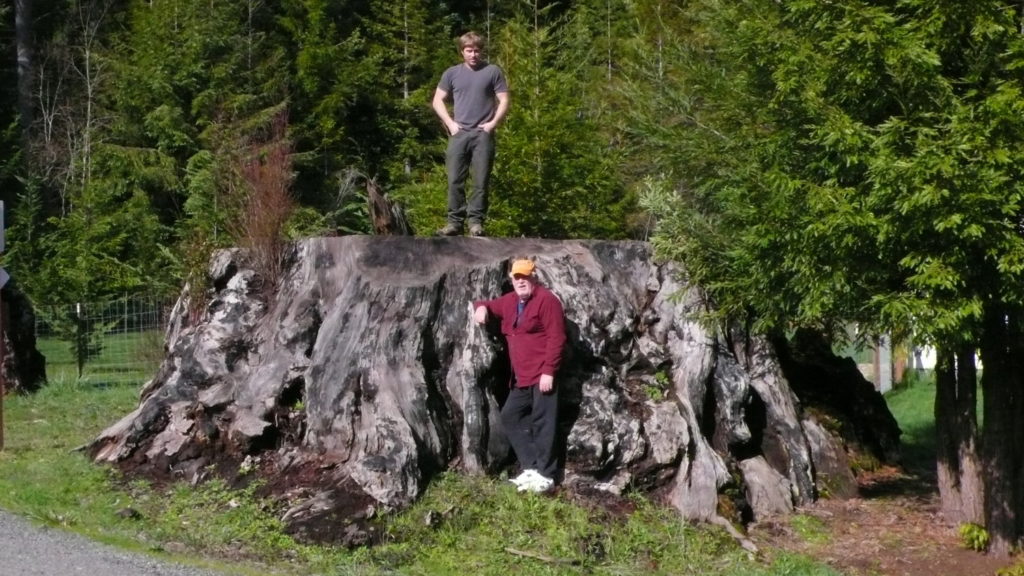
Once the Archangel team finds the right tree (which may, at that point, already be a stump), they harvest hundreds of pale green branch tips that are about the size of a fingertip. These are then taken back to the lab in Michigan. Collecting these fairy rings at the right time is critical.
“We stay away from collecting material when the tree is stressed out,” Milarch’s son Jake explains. “It has to be at a certain point of hardening off,”
If the cutting is too green it will wilt and die, but if it’s too old it won’t root properly.
The next step is the delicate process of coaxing the cuttings to take root. This process involves a lot of trial and error, and only three to four percent of the tiniest cuttings typically survive long enough to make it to the ground .
The First Redwood Clones
On December 14, 2018, the Archangel team planted 75 coastal redwood saplings at Presidio, a park in San Francisco. These tiny trees may look unassuming, but they are exact clones of those massive stumps found by Milarch and his team.
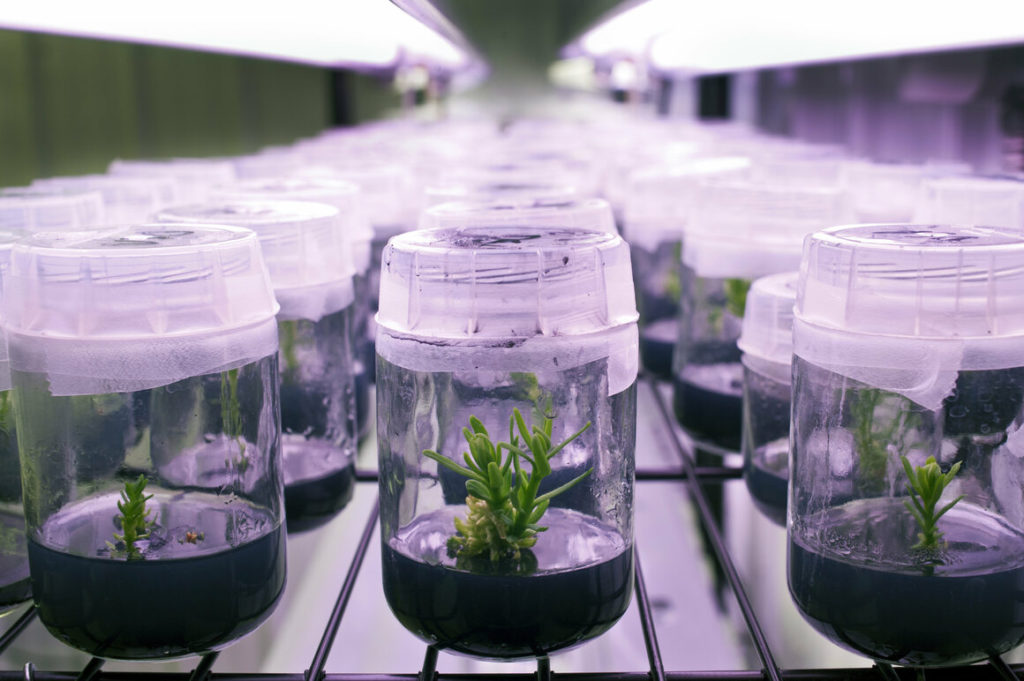
Presidio is ideal because of the gof bank that rolls over the site in the very early morning nearly every day, mimicking the conditions that have been disappearing on the state’s coast because of the increase in dry weather due to climate change.
Despite this, the team at Presidio tends the site aggressively to ensure the survival of the small, vulnerable trees, because their success isn’t guaranteed. This involves brush-cutting to prevent tall grasses from overtaking the trees, and giving the trees drip irrigation a couple hours per week when it’s not raining.
Cloning Redwoods to Mitigate Climate Change
While re-planting our lost redwoods won’t be enough on its own to reverse climate change, it will be a significant help. Milarch is hoping that the Presidio site will demonstrate that redwood clones can be planted on a larger scale, and give them the necessary information to plant other sites around California.
This, according to Milarch, can help us to significantly reduce the amount of carbon in our atmosphere.
“Redwoods are one of the fastest growing trees on Earth,” he says. “They grow up to 10 feet a year. And they have a remarkable ability to store CO2 as a tree species and produce oxygen,”.
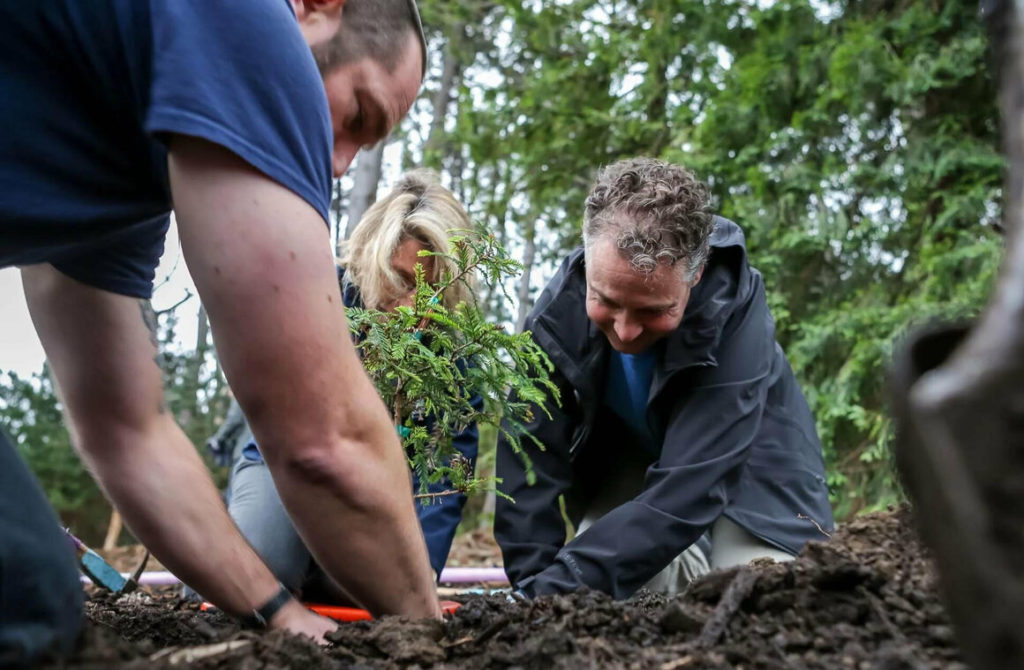
Milarch explains that we need a viable and measurable solution to combating climate change and reverse excess carbon, which is causing extreme weather events like storms and droughts. He refers to his beloved redwoods as “Champion Trees”, and believes that they are the answer.
“It’s about our children and grandchildren having a shot at life,”.
Scientists Mark Maslin and Simon Lewis caution against viewing tree planting as a magic bullet, however, since even fast-growing trees take a long time to grow and be mature enough to reach their maximum carbon-trapping potential- time that climate change cannot afford.
Reforestation, they say, should be thought of as one solution to climate change among many. As a global society we still have to reduce our overall carbon emissions if we want to have any measurable impact on the planet’s climate crisis.
Milarch, for his part, is continuing to do his part in the fight against climate change.
“We have a list of the 100 most important trees to clone. We have our marching orders. We know where we need to go”.
Keep Reading: How creating wildlife crossings can help reindeer, bears – and even crabs
Sources
- “Forests and climate change.” IUCN.
- “The global tree restoration potential.” Science Mag. Jean-Francois Bastin, et al. July 5, 2019.
